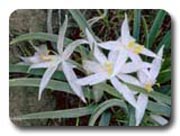About Medford
Due to the complexity and variety of work programs, the Medford District employs the largest workforce of any District in the Bureau of Land Management—over 180 permanent and numerous seasonal employees. Resource professions include archaeology, botany, ecology, engineering, fire management, fish and wildlife habitat management, forestry, geology, hydrology, law enforcement, rangeland management, realty, recreation, and soil science.
District Programs
Abandoned Mine-Lands

Beginning in the 1850s, mining played a significant role in the settlement and development of southwest Oregon. Both placer and hardrock mining took place historically on public lands that are now managed by the BLM Medford District. These early mining operations occurred prior to the environmental regulations that we have today. Many mines were abandoned after they were either mined out or became uneconomical to operate. Some of these abandoned mines may pose threats to physical safety or environmental damage.
Botany

BLM botanists perform an environmental assessment (EA) for any Proposed BLM action. This determines the need for a species to be protected or mitigated as appropriate in order to prevent it from being a threatened or an endangered species.
The National Forest Management Act states that federal agencies need to maintain viable populations of all desired native plant communities and native plant species.
Fire/Fuels
Fire ecologists work to understand the role that fire plays on the landscape. Years of fire suppression and other management techniques have changed the historical role of fire. With the suppression of fire, fuels, such as brush, logging slash, and over abundant seedling trees, have built up. Consequently, the landscape has been altered and the risk of damage to the landscape has increased. Fire ecologists study and apply the effects of naturally occurring fire in order to create prescriptions for fuels reduction and to help prevent catastrophic fire events.
Cultural Resources

BLM recognizes that cultural resources are fragile, irreplaceable resources with potential public and scientific uses, representing an important and integral part of our Nation�s heritage. The BLM�s cultural resource management program is designed as a comprehensive system for identifying, planning the appropriate use of, and managing cultural resources on public lands and in areas of BLM responsibility. The BLM manages cultural resources under its jurisdiction or control according to their relative importance, protecting against inadvertent loss, destruction, or impairment, and encouraging and accommodating the uses determined appropriate through planning and public participation.
Want to learn more about RMPs for Western Oregon?
